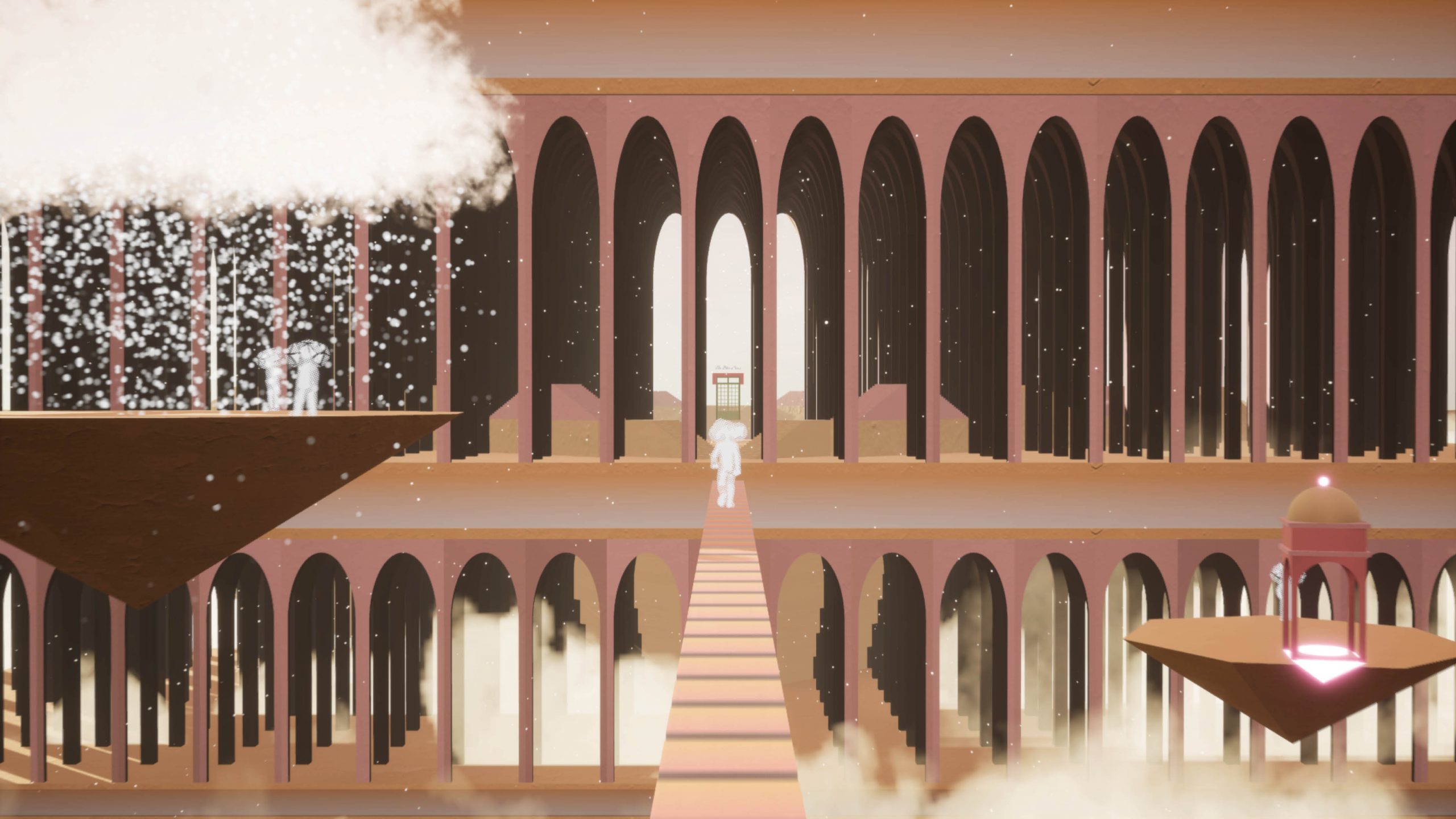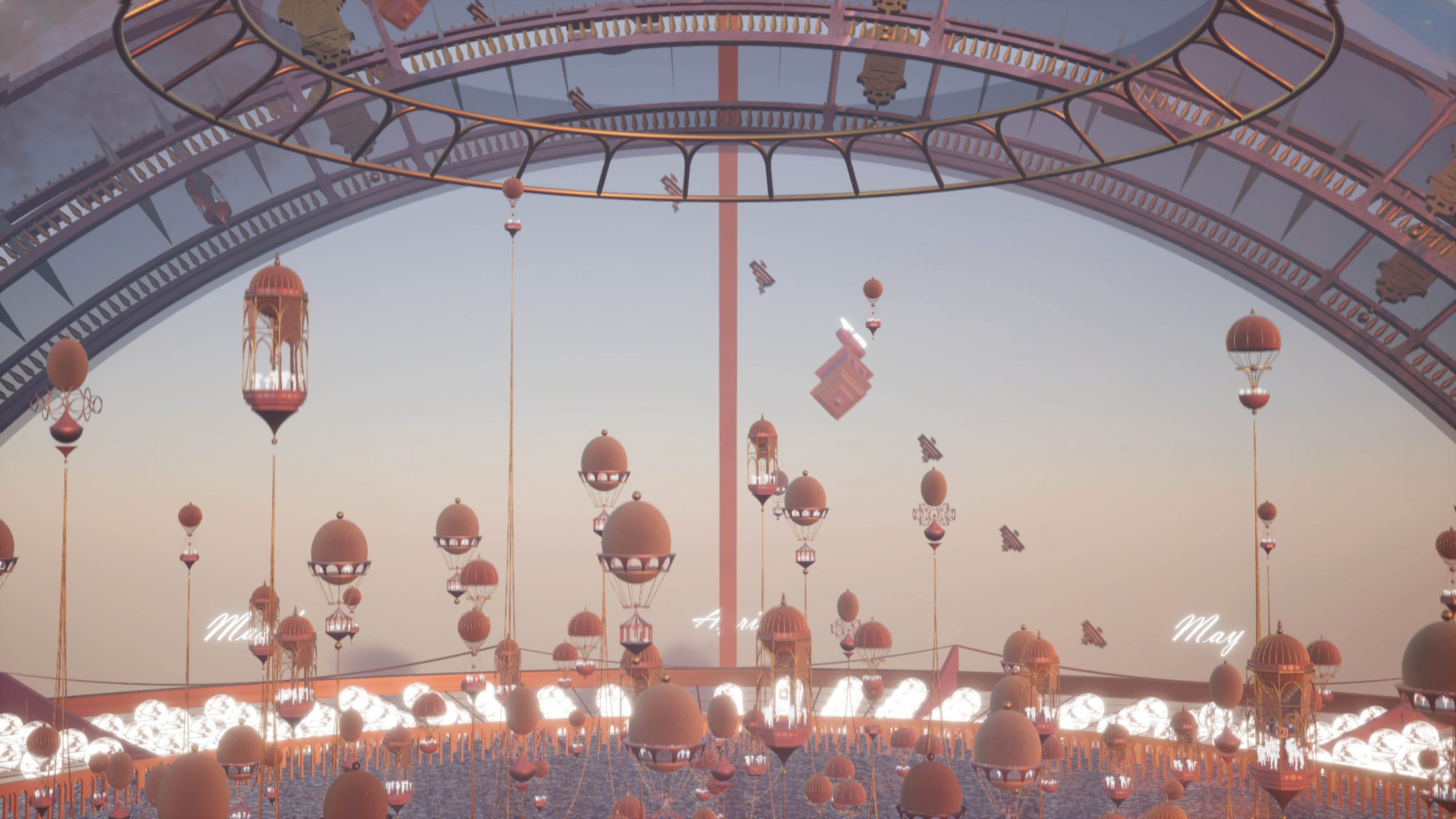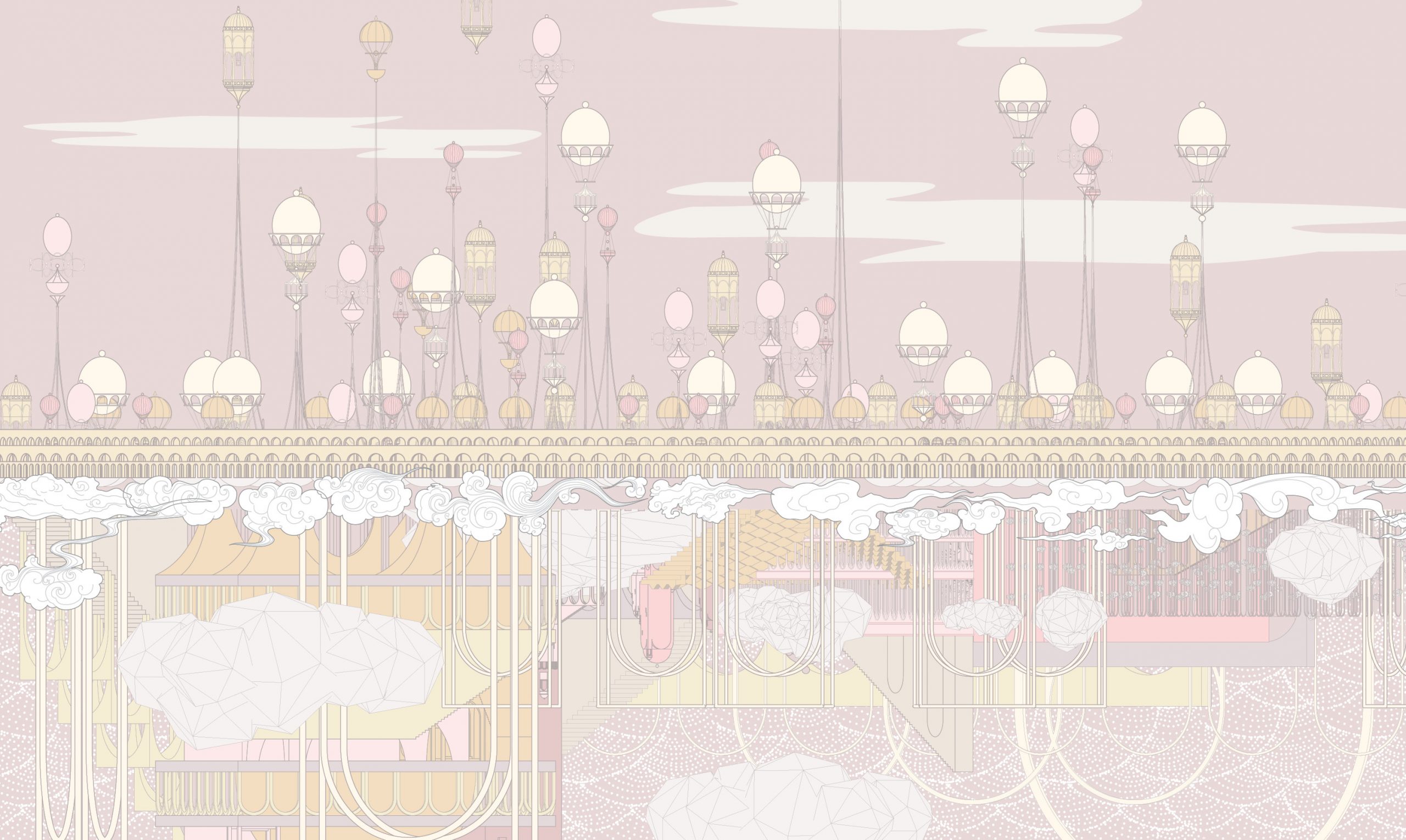If time had to be measured, it would be nice if it could be measured by the clouds that crosses our skies…

Cloud o’ Clock is a curated space for broadcasting archived and real-time data of skyscapes. It explores the potential of virtual architecture in conveying and sharing information that allows for massive amounts of complex data to be understood through a phenomenological experience. The architectural space operates as a virtual meteorological device for cloud watching.

Conceptual inspiration in the design was derived from an essay “Of Clouds and Clocks” by Karl Popper, proposing that the cloud and the clock belong to two extreme ends of an opposing system. The highly irregular and unpredictable clouds, Popper asks us to imagine as a cluster of gnats or flies. This system associates with vagaries of weather. Contrastingly, there is the reliably predictable precision clocks which calls upon the systemized movements of the planets and the universe. Physical Determinism, brought about by the Newtonian Revolution, argues that given enough information and time, all clouds can be understood as a clock. Contrastingly, Physical Indeterminism rejected that any clock is perfect, that a certain looseness accounts for the element of chance in all events. A physical indeterminist believes to some degree, that all clocks are clouds, though clouds of different degrees of cloudiness. Cloud o’ Clock in its architectural form is inspired by playing with this duality between a singular and logical framework of how one understands clocks with the ephemeral and whimsical persona of clouds.


When speaking of temporality in Cloud o’ Clock, one must look towards the ancient Greeks who characterized the concept between 2 different figures: Chronos, and Kairos. Whilst Chronos quantifies the fundamental conception of time dealing with specific measures and durations, elusive Kairos presents qualities of opportunity, happenstance and chance. Kairos is also the modern Greek word for weather, a significant phenomenon inseparable from clouds. Together, Chronos and Kairos amalgamates to a dance between specificity and serendipity echoing a certain essence from Popper’s system of clouds and clocks. Clouds as a dataset that uniquely contains both experiential and numerical information, will be spatially organized through the interplay between the two realms of Chronos and Kairos within virtual space. Metaphors present in both clouds and time weaves together the narrative for Cloud o’clock.




The virtual strives to unbound us from realities’ limitations and expand our minds rather than appraise it. Cloud o’ Clock was nurtured from my personal and childlike love for the skies, but it also aspires to illustrate the underlying potential of virtual architecture, a necessity in our profession for playing with the fantastical nonsense of our imaginations, and faith that design is at its best and most rewarding when giving form to this essence of creativity.


